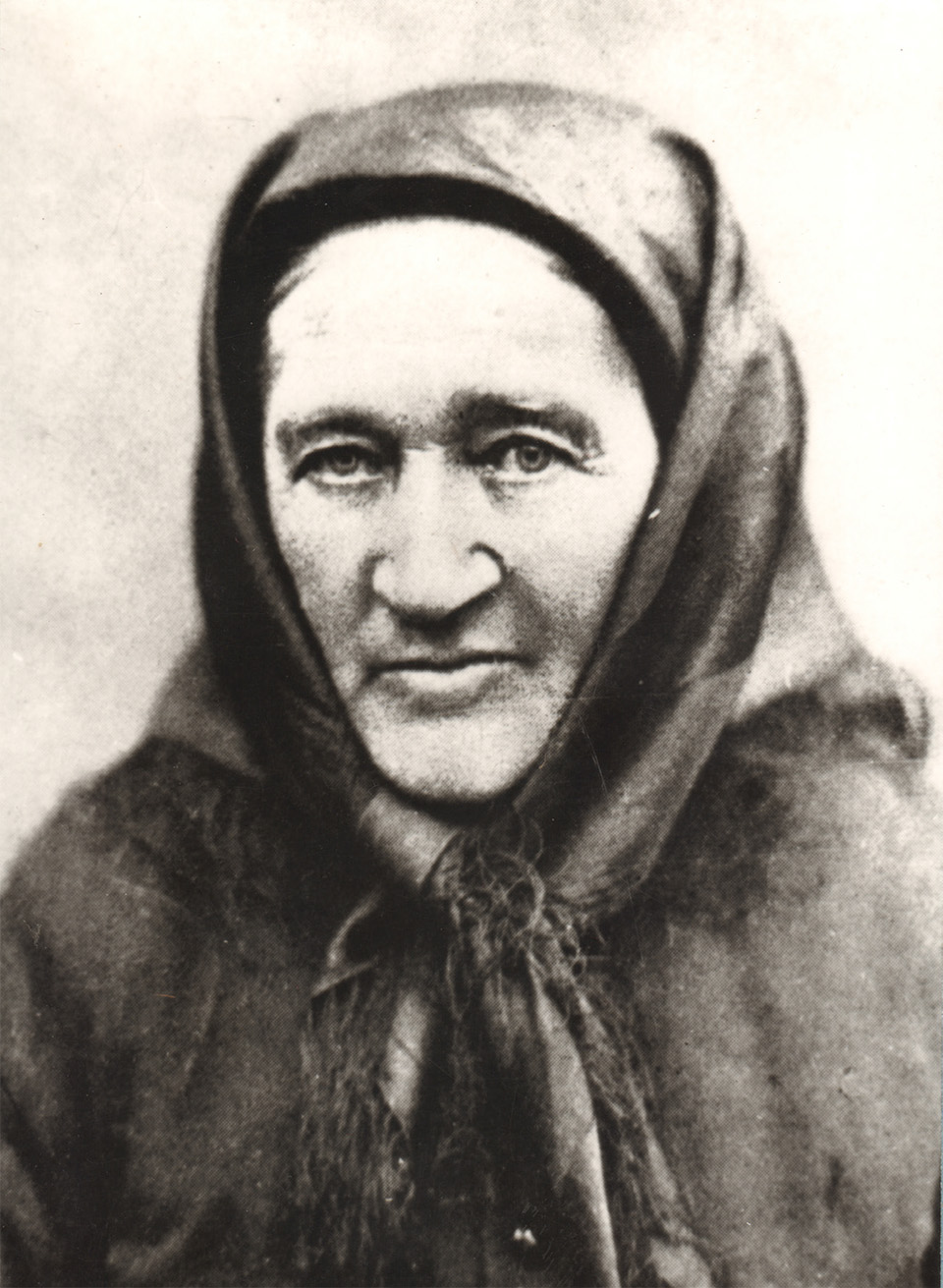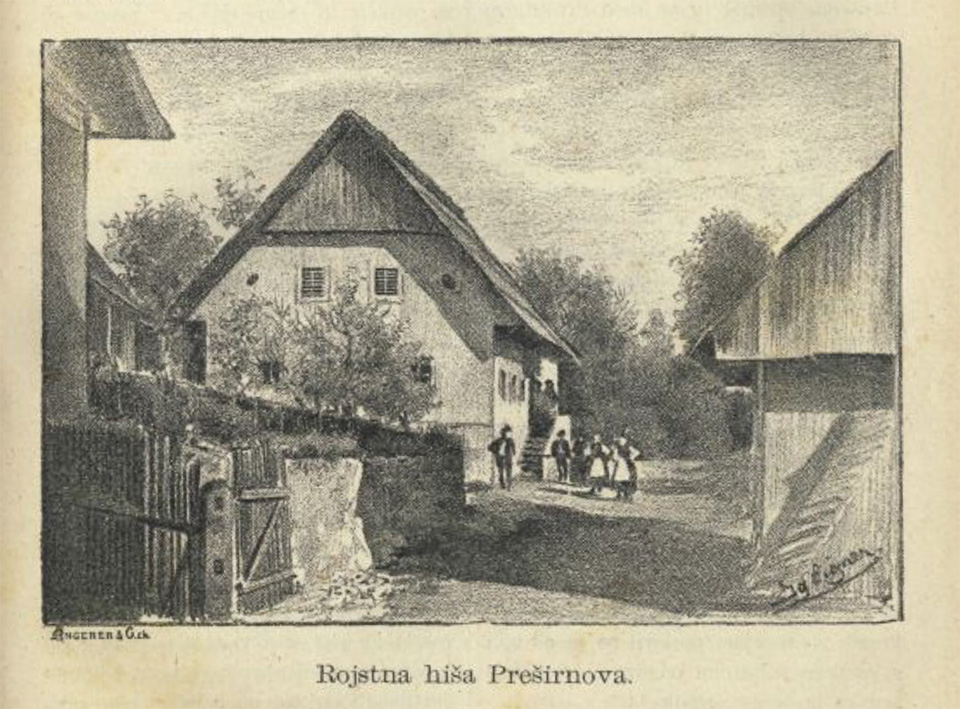The Prešeren's are an old Gorenjska generation who first appeared in Vrba in the second half of the 17th century. Among the masters of the Ribič homestead, it is attested that the first was Prešeren's great-grandfather Jožef (1688–1754), who was the serf of Katzenstein Mansion in Begunje. He was followed by his only son Jernej (1742–1800), who was married to Mina (1737–1823), from the Boštjan family in Vrba. Next came the poet's father, Šimen Prešeren (1762–1837), who in 1797 married Mina Svetina (1774–1842), from the Muhovč family in Žirovnica. Simen and Mina had eight children. The homestead was then inherited by the poet's sister Mina (1808–1878), who in 1827 married Joseph Vovk (1806–1881) from Črnivec near Brezje. From then on, the masters of the Ribič homestead changed their surname to Vovk. Their successor was Jožef Jr. (1844–1904), who married Maria Debeljak (1859–1917). Among their nine children, the eldest son Janez (1883–1935) took over the homestead and married Mina Fertin (1892–1946). Janez died in 1935, leaving behind a wife and nine daughters. Two years later, Mina left the house to the province on the condition that they build her a new one. On 21 May 1939, the Ribič homestead became Prešeren's birth house – a memorial museum.

Prešeren's sister Lenka disclosed a lot of interesting facts about her brother and the relationship in the poet's family to Tomo Zupan– a relative and a specialist in Prešeren's works.

In 1879 Ignatius Eigner created one of the first depictions of Prešeren's birth house for the magazine Zvon (Bell).
Prešeren's birth house is one of the oldest houses in the village of Vrba. The entrance hall and the black smoke kitchen have been preserved from the time of the poet's childhood. In 1856 a fire destroyed the roof of the house, therefore the straw roof was later replaced by bricks. The state repurchased the house in 1939 and radically renovated it. The roof was covered with handmade bricks, carved stone window frames were built in, a wood-burning stove was placed in a corner of the house and the interior was renovated; this is how the house got it's present-day appearance.In 1895 the granary was transformed into an exhibition area, and the exhibition of 200 years of the poet's death was upgraded in cooperation with the Upper Gorenjska Museum so that it tells the entire story of the poet's life and work. In 2019 the exterior, entrance hall, museum shop and exhibition areas were renovated, giving the house a 'fresh' new look.